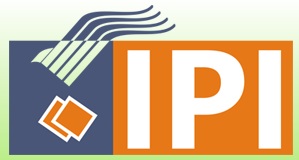KOMBINASI ALGORITMA JARINGAN SYARAF TIRUAN LEARNING VECTOR QUANTIZATION (LVQ) DAN SELF ORGANIZING KOHONEN PADA KECEPATAN PENGENALAN POLA TANDA TANGAN
Abstract
Full Text:
PDFReferences
Puspitaningrum, Diyah. 2006. Pengantar Jaringan Syaraf Tiruan. Yogyakarta : Penerbit: Andi.
Siang, Jong Jek. 2005. Jaringan Syaraf Tiruan Pemrograman Menggunakan Matlab. Yogyakarta : Penerbit Andi.
Kusumadewi, Sri. 2004. Membangun Jaringan Syaraf Tiruan Menggunakan Matlab. Yogyakarta : Penerbit Graha Ilmu.
Puspitorini, Sukma. 2008. Penyelesaian Masalah Traveling Salesman Problem Dengan Jaringan Saraf Self Organizing. Jurnal Media Informatika, Vol. 6,No. 1, Juni 2008, 39-55
Andrijasa ,M.F., Mistianingsih. 2010. Penerapan Jaringan Syaraf Tiruan Untuk Memprediksi Jumlah Pengangguran di Provinsi Kalimantan Timur Dengan Menggunakan Algoritma Pembelajaran Backpropagation. Jurnal Informatika Mulawarman Vol 5 No. 1 Februari 2010 50
Sahid, Drs,MSc.. 2006. Panduan Praktis Matlab. Penerbit ANDI Yogyakarta.
Silvia, Evanila. 2007. Disain Jaringan Syaraf Tiruan Untuk Prediksi Kualitas Gula Kristal Putih. Tesis Sekolah Pascasarjana Institut Pertanian Bogor.
Tae, Gadis Fransiska Yulianti et al. 2010. Penerapan Kohonen Self Organized Map Dalam Kuantisasi Vektor Pada Kompresi Citra Bitmap 24 Bit.
Jurnal Informatika, Volume 6 Nomor 2, November 2010. Fakultas
Teknologi Informasi, Program Studi Teknik Informatika Universitas
Kristen Duta Wacana Yogyakarta.
Qur’ani, D.Y., Rosmalinda, S. Jaringan Syaraf Tiruan Learning Vector Quantization Untuk Aplikasi Pengenalan Tanda Tangan. Seminar Nasional Aplikasi Teknologi Informasi 2010 (SNATI
.Yogyakarta, 19 Juni 2010.
Anike, M., Suyoto & Ernawati. 2012. Pengembangan Sistem Jaringan Syaraf Tiruan Dalam Memprediksi Jumlah Dokter Keluarga Menggunakan Backpropagation (Studi Kasus: Regional X Cabang Palu). Seminar Nasional Teknologi Informasi dan Komunikasi 2012 (SENTIKA 2012). Yogyakarta, 10 Maret 2012.
Prabowo, A., Sarwoko, E.A. & Riyanto, D.E. 2006. Perbandingan Antara Metode Kohonen Neural Network dengan Metode Learning Vector Quantization Pada Pengenalan Pola Tandatangan. Jurnal Sains & Matematika Vol.4, No. 4, Okt 2006.
DOI: https://doi.org/10.29103/techsi.v6i1.165
 Article Metrics
Article Metrics
 Abstract Views : 925 times
Abstract Views : 925 times
Refbacks
- There are currently no refbacks.
TECHSI Journalindexed by:
TECHSI Journalis a member of:
© Copyright of Journal TECHSI, (e-ISSN:2614-6029, p-ISSN:2302-4836).














